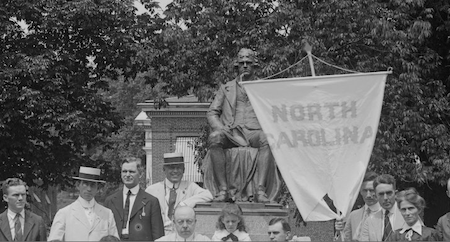
It’s Saturday, so it’s time for another post about UVa’s football song heritage. This week’s contest isn’t one of those like the South’s Oldest Rivalry that has inspired its own set of songs—Virginia has only played Southern Mississippi a handful of times in the history of the program. The contest against Southern Miss in 2009 did not have the best outcome for UVa, so this week’s song is to inspire those members of the Cavaliers community to redouble their energies in supporting the team.
Stephen M. O’Brien, who graduated from the University in 1902 and went on to the Kentucky House of Representatives in 1914, would have appreciated having “Just Another Touchdown for U.Va.” used in this context. His song, written to the tune of “Just A Little Bit Off The Top” (the same tune as “When Johnny Comes Marching Home”), has been used to marshal the spectators against Carolina, Norfolk, and Georgetown at various times. The third verse in the oldest printing of the lyrics extant (Songs of the University of Virginia, 1906) is as follows:
We’ve just come from Norfolk for the day–the day,
To-morrow we’ll go back to U.Va., V-a,
We’ll gather in Carolina’s tin, Virginia’s sure to win,
Ray! ray!! ray!!! then, and make a mighty din.
But in the 1911 University of Virginia football songbook, it’s transformed to:
We’ve just come to Georgetown for the day–the day,
Tomorrow we’ll go back to U.Va.,
We’ll gather in old Georgetown’s tin, Virginia’s sure to win,
Yell like hell then and make a mighty din.
And in the version performed by the Virginia Glee Club (arranged by Club’s conductor Arthur Fickenscher sometime between 1920 and 1933), the third verse is omitted entirely, but in the second verse the song has “Carolina’s mighty lame” (sometimes “Maryland’s mighty lame”) instead.
So I’d propose this set of words for this week:
Just another touchdown for U.V-a, V-a,
Just another touchdown for U.V-a, V-a,
Carry the ball a yard or two, we’ll tell you when to stop,
Yell, boys, yell, boys, Virginia’s on the top.Just watch the men whose jerseys bear the V, the V
If up-to-date football you want to see, to see,
They stop the bucks, they block the kicks, the Golden Eagles are lame,
And the ball goes over, Virginia’s got the game.







